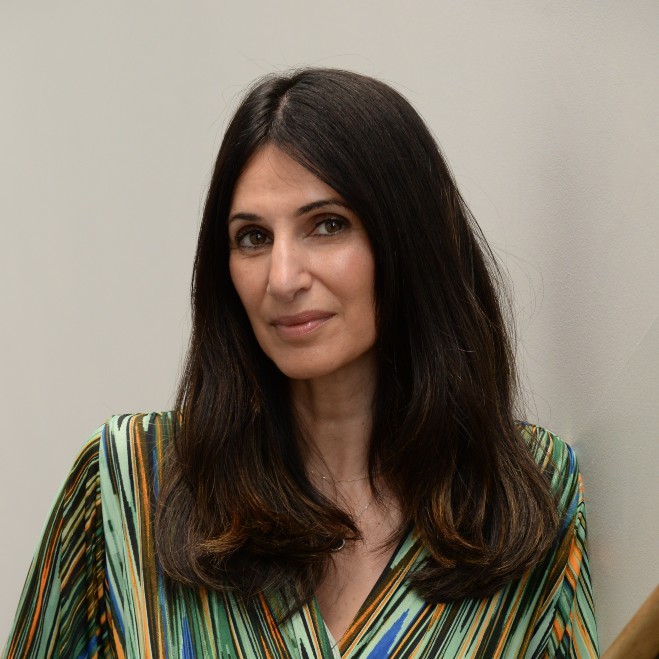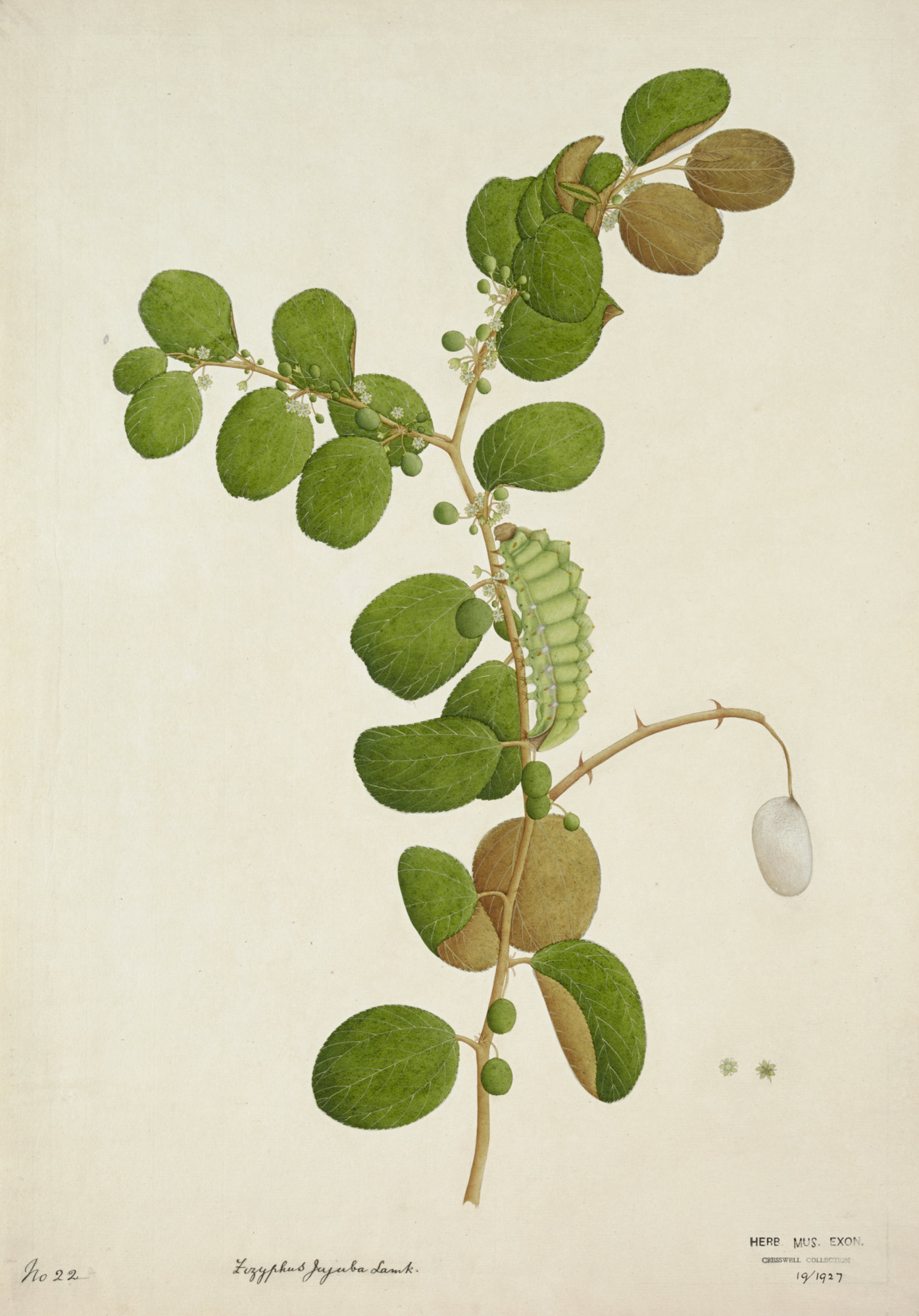

Jujube or Chinese date (Ziziphus jujube) with tussore silk moth larvae (Antheraea paphia)
The Royal Albert Memorial Museum and Art Gallery, Exeter
Accession number: 1770/1810
Mona Arshi

I am
staring
at the painting.
Yes …it is very English… it is almost twee. It’s a botanical
illustration in the naturalist style drawn
with fine purposive strokes.
The artist has taken
much care with his allotted task, that is his commitment to
science …to record the plant, to imprint
the plants anatomy on the page,
the plants character and colour, the blush on the fruit
and also, to capture this engorged bright green caterpillar of course.
This painting is part of a much larger set. I can tell you now
a trio of artists were involved in producing these works.
This is clearly a confident artist with confident brush strokes.
As I encounter it , I notice something, it stops me a little,
yes there is a restraint of hand but something else layering
the painting under the curve of each leave, what does the artist want me to notice?
Until a few years ago no one knew the artists names. These paintings
were rarely signed by their creators.
Three artists were employed as ‘company men’, the trio of artists whose
function was to create works there were typical of the British East Asia Company style.
I like to imagine these artists at work at their easels. Shaikh Zain Al Din, Bhawani Das, Ram
Das. The forgotten masters.
I wish I could tell you more about their lives, their loves, and passions
but I cannot even tell you where Shaikh Zain Al din is buried.
His British patrons praised the clarity of these drawings, but I wonder what
they failed to see when they turned the exquisite pages in their albums in England.
I don’t know how you prefer your Art, but I prefer mine
with counterpoints, I wish all painting could liberate the senses.
In this painting, there sits the caterpillar fat from feeding from the jujube tree.
If this caterpillar was allowed to live it would become a spectacular
creature. It would live as an emperor moth.
What this painting asks us to do so is to lose ourselves
in the messy conflicts of empire and art in the textures of ancient paint.
Of course, we all know the true fate of the green larva.
If this caterpillar was left alone it would cocoon itself into its vast sticky
jacket and emerge into an emperor moth with his two sets of bright mirror eyes.
I want to imagine Shaik Zain Al Din, in his rooms his children at his feet
as he instructs them on light and why the spiracles of this larva are this shade of yellow.
I like to think of him listening to the music of the plants
whilst the fruits of the jujube tree turn red and to lift up a child, point to the canvas and
say ‘where eye and ear meet my jaan that is where art is made.’